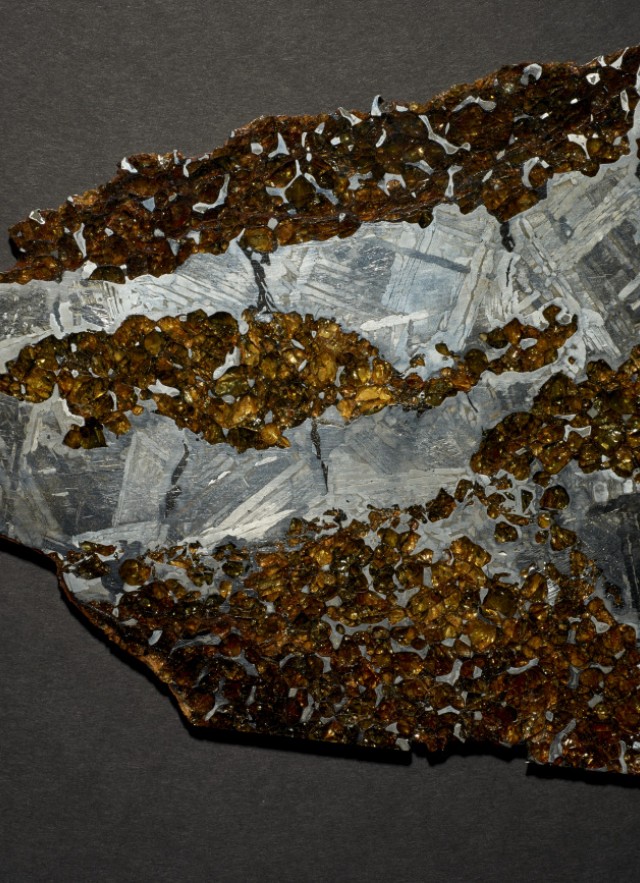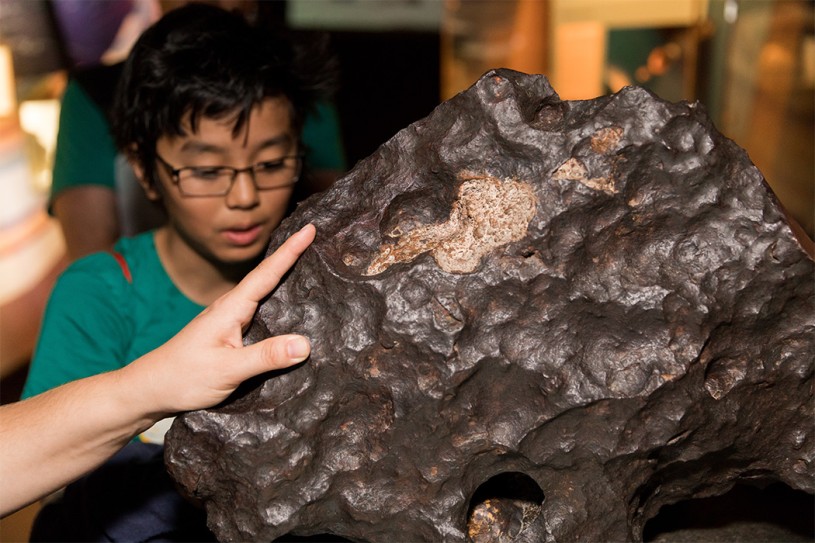The Hart Museum remains closed. Los Angeles County has approved a plan to transfer the William S. Hart Museum and Park from the County to the City of Santa Clarita.
Behold! These Are Really Old!
By far the oldest items in our collections: our many meteorites

In the collections here at the Natural History Museum of Los Angeles County, you will find no shortage of old specimens—historical documents, animals preserved in jars, and many, many fossils. But by far, the oldest items within our care are meteorites.
The Gem and Mineral Collection has over 50 meteorites, many as old as our solar system—around 4.6 billion years old. That was when the sun and planets formed, as dust and debris swirling in space started to clump together and form these big bodies. Many meteorites are the leftovers of that process, which sounds a little sad, like they were picked last for kickball, but it’s lucky that these bits remained independent, because each of them can teach us a lot about our early solar system, such as what minerals initially made up the planets. From the looks of it, there were fewer than 60 minerals when the solar system formed, which means that the more than 5,000 minerals we find here on Earth today have been created since then by the workings of our planet.
The Pallasite Meteorite
The meteorite featured above is a slice from a pallasite meteorite found in Russia. This rare type of meteorite is made of iron and nickel, and the bright yellowish bits are olivine crystals (which are made of magnesium, iron, silicon, and oxygen). It may once have been part of a big asteroid, and possibly formed at the border of the outer shell and a more molten core.
What is the difference between a meteor and a meteorite?
And as a quick aside, in case you’ve ever been confused about meteor vs. meteorite and such, the naming convention goes like so: meteoroids are small rocky objects traveling out in space. Meteors are bright streaks of light seen in the sky as the rock ignites in our atmosphere. And finally, meteorites are meteoroids that have crash-landed on Earth. Could we have called them all the same thing and called it a day? Maybe. But this is what we have, and we’re sticking with it, so get on board.
The Canyon Diablo Meteorite

In the Gem and Mineral Hall, several meteorites are on display for visitors to enjoy, the biggest of which is the Canyon Diablo Meteorite—one of many chunks left over from an asteroid impact about 50,000 years ago that created the Barringer Crater in Arizona. This meteorite isn’t behind a glass case, so visitors have the rare opportunity to reach out and touch a hunk of rock that has traveled out in space for billions of years. And since it’s been through so much already, hey, it can probably handle a few fingerprints from curious museum-goers.